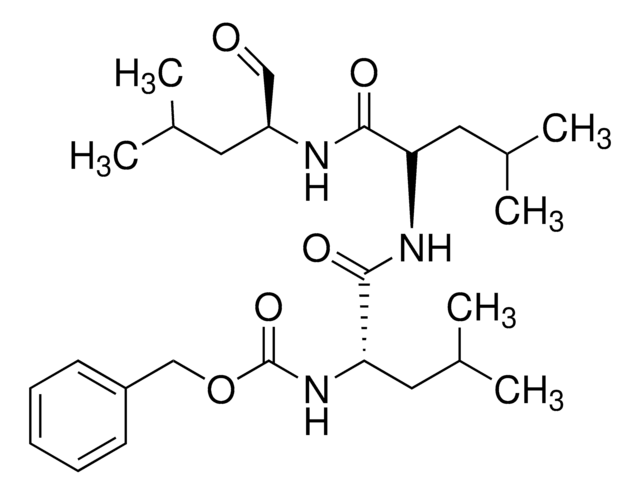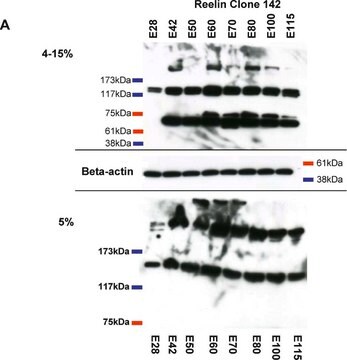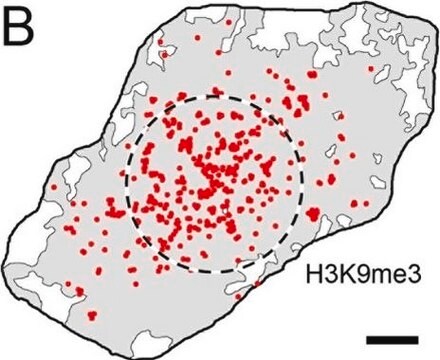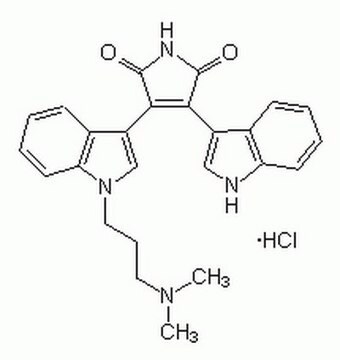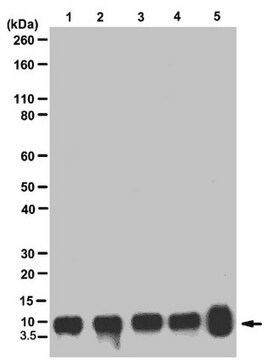05-1355
Anti-acetyl Histone H4 (Lys5/8/12/16) Antibody, clone 3HH4-4C10
ascites fluid, clone 3HH4-4C10, from mouse
Sinónimos:
H4KAc, Histone H4 (acetyl), H4 histone family, member N, H4 histone, family 2, histone 2, H4, histone 2, H4a, histone IV, family 2, histone cluster 2, H4a
About This Item
Productos recomendados
biological source
mouse
Quality Level
antibody form
ascites fluid
antibody product type
primary antibodies
clone
3HH4-4C10, monoclonal
species reactivity
human
species reactivity (predicted by homology)
mouse (based on 100% sequence homology), rat (based on 100% sequence homology)
technique(s)
immunocytochemistry: suitable
western blot: suitable
isotype
IgG1κ
NCBI accession no.
UniProt accession no.
shipped in
dry ice
target post-translational modification
acetylation (Lys5/Lys8/Lys12/Lys16)
Gene Information
human ... H4C1(8359)
mouse ... H4C1(326619)
General description
Specificity
Immunogen
Application
1:500 dilution from a representative lot detected Histone H4 in A431 and HeLa cells.
Epigenetics & Nuclear Function
Histones
Quality
Western Blot Analysis: 1:2,000 dilution of this antibody detected Histone H4 on 10 µg of HeLa acid extract lysate.
Target description
Physical form
Storage and Stability
Handling Recommendations: Upon receipt and prior to removing the cap, centrifuge the vial and gently mix the solution. Aliquot into microcentrifuge tubes and store at -20°C. Avoid repeated freeze/thaw cycles, which may damage IgG and affect product performance.
Analysis Note
HeLa acid extract lysate
Disclaimer
¿No encuentra el producto adecuado?
Pruebe nuestro Herramienta de selección de productos.
Storage Class
12 - Non Combustible Liquids
wgk_germany
WGK 1
flash_point_f
Not applicable
flash_point_c
Not applicable
Certificados de análisis (COA)
Busque Certificados de análisis (COA) introduciendo el número de lote del producto. Los números de lote se encuentran en la etiqueta del producto después de las palabras «Lot» o «Batch»
¿Ya tiene este producto?
Encuentre la documentación para los productos que ha comprado recientemente en la Biblioteca de documentos.
Nuestro equipo de científicos tiene experiencia en todas las áreas de investigación: Ciencias de la vida, Ciencia de los materiales, Síntesis química, Cromatografía, Analítica y muchas otras.
Póngase en contacto con el Servicio técnico
